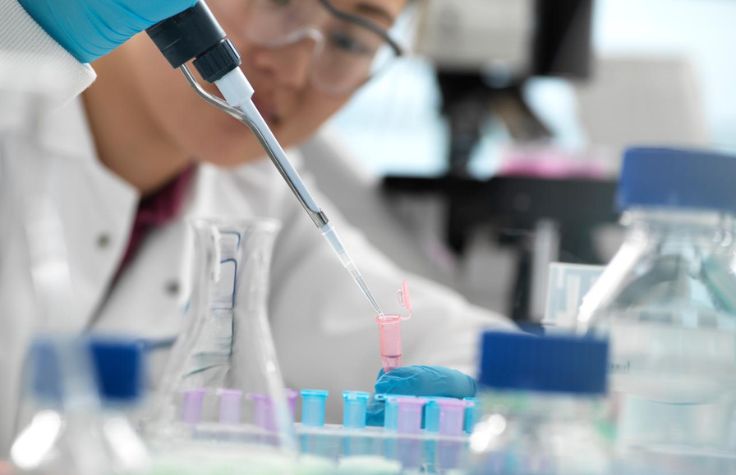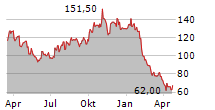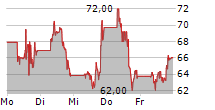
NORTHAMPTON, MA / ACCESSWIRE / December 12, 2024 / Illumina
The comprehensive method provides improved detection and greater insight on the complex disease that impacts millions of people worldwide
Originally published on Illumina News Center
The Leukemia & Lymphoma Society estimates that by year end, 2024 will have seen 187,740 Americans diagnosed with a blood cancer-or about one person every three minutes.
This unfortunate statistic belies the difficulty of arriving at a diagnosis and treatment. Current conventional diagnostic workflows use multiple lab technologies, such as karyotyping, fluorescence in situ hybridization, microarrays, gene panels, and PCR testing.The process is complex, the technology is limited, and the results can be conflicting.
With unprecedented sensitivity and accuracy, whole-genome sequencing (WGS) can detect variants and biomarkers that are critical for prognosis, risk stratification, and treatment decisions.
"Sequencing technology has really improved clinical outcomes in terms of risk stratification and diagnostic decisions for cancer," says Illumina bioinformatician Weida Gong. "For acute myeloid leukemia, or AML, in particular, sequencing is essential because the mutational profile may change a doctor's treatment decisions." Some mutational patterns more significantly impact how the disease progresses, and if these mutations or abnormalities go undetected, patients suffer lower survival rates.
The standard of care for bone marrow or blood cancer patients often involves multiple tests. "Conventionally, physicians have been using karyotyping or cytogenetics to profile just the genomic abnormality for hematology patients," Gong says. Unfortunately, these methods cannot provide a high-resolution picture of the disease. Cytogenetics may only detect chromosomal aberrations larger than five megabases (5 million genetic base pairs). Hematology patients, Gong explains, can have mutations that affect just one or a few base pairs-small insertions or deletions (indels) far from the megabase scale. Standard testing misses this important information that impacts diagnosis, risk stratification, and treatment.
Last month at the American Society of Human Genetics (ASHG) annual meeting in Denver, Gong presented a poster on a study evaluating the analytical performance of WGS (limit of detection, sensitivity, specificity, and reproducibility) in identifying somatic small variants, structural variants (SV), and copy number alterations (CNA) specific to AML, in a cohort of AML patients. (Illumina coauthor Guidantonio Malagoli Tagliazucchi had just presented the same poster at the European Society for Medical Oncology annual meeting in September.)
The researchers used a combination of 23 clinical samples from collaborators at Washington University School of Medicine in St. Louis, plus a cohort of 30 AML clinical samples from Discovery Life Sciences, and more than 500 samples, including both cell lines and clinical samples, from their in-house development and optimization work with the assay. They processed these samples with Illumina DNA PCR-Free Prep, sequenced them with the NovaSeq 6000 System with S4, and used the DRAGEN version 4.2 secondary analysis heme pipeline to compare variants detected from WGS.
The demonstration study compared the data from Illumina's WGS workflow with reference sets from Washington University and Discovery Life Sciences. Overall, they found an improved and more complete picture of each tumor, and the new data provided greater insights.
"When you look at AML patients, there are mutations that have low variant allele frequency [VAF], from 5% to 20%," Gong says. "This means that if you sequence a specific location, 5% or 20% of time, you're going to see that mutation." Standard clinical methods for blood cancers sequence at only 30× or 40× coverage. The previous Washington University paper used about 60×. In their study, Gong and his coauthors sequenced at 200× coverage, which helped reveal mutations that are more difficult to find using conventional technologies such as microarrays.
"The sensitivity was 100%, including hard-to-find indels," Gong says. "There's one particular mutation that is very, very important for AML risk stratification, and that is FLT3-ITD. There are also AML specific SVs and CNAs. We were able to detect all of them from the clinical samples." The researchers also carried out a limit-of-detection study in which they were able to report a 95% detection rate for 5% VAF at a coverage of 140×. This is the same VAF percentage as the recently FDA-approved TruSight Oncology Comprehensive assay. "The fact that this assay's limit of detection is on par with TSO Comp is super, super exciting."
The study was performed at Illumina Laboratory Services in San Diego, where the workflow is end-to-end from extraction to the downstream bioinformatics pipeline. Thanks in part to this setup, they were able to achieve a total turnaround time of five days. "This is very important, especially for the case of tumor diagnosis. Time is essential," Gong says. Conventional testing is often iterative and requires multiple steps and procedures. "Some tests, like qPCR, can be very fast, returning results in two or three days-but they only look for specific mutations. And the other tests take much longer.
"WGS is definitely very sensitive and we don't need to apply multiple different technologies to profile the genetic risk for AML patients," says Gong. "Whole-genome sequencing is a one-stop shop."
Illumina has developed a tumor-only, high-coverage WGS method and bioinformatics pipeline, based on its DRAGEN software, to better characterize hematological malignancies for research use. Illumina is the only sequencing company that provides all the components to do WGS heme testing across library prep, sequencing, secondary analysis, and interpretation.
The DRAGEN heme solution is integrated with Illumina Connected Insights to prioritize, interpret, and report on key variants for clinical researchers. Connected Insights includes a powerful tool kit with integrated knowledge sources, automated variant classification, comprehensive visualizations, and extensive filtering options. In early 2025, Illumina will expand Connected Insights' functionality to include automated risk stratification for AML samples (according to World Health Organization and European LeukemiaNet guidelines for 2022), with transparent logic and evidence display. Thanks to the software's automated data transfer and analysis launch, researchers will be able to implement a "no touch" automated complete solution, from sequencing to draft research report, and enjoy new efficiencies in heme WGS analyses.
Industry leaders understand the power of WGS to provide a comprehensive genomic characterization for hematologic malignancies, well beyond what cytogenetics applications can achieve. In August 2023, Medicare approved Washington University's WGS test for blood cancers, called ChromoSeq. Yet wider implementation of WGS-even for AML, where its value has been reported-remains a challenge for health care systems.
"There is a lot of interest," Gong says. "Regarding the utility of WGS, the sky is the limit."
To learn about the Illumina heme WGS interpretation solution, click here.
To read about applications of WGS in hematologic malignancies, click here.
To see a demonstration of the DRAGEN bioinformatics pipeline for heme WGS, please contact dragen-info@illumina.com.

PHOTO: Andrew Brookes
View additional multimedia and more ESG storytelling from Illumina on 3blmedia.com.
Contact Info:
Spokesperson: Illumina
Website: https://www.3blmedia.com/profiles/illumina
Email: info@3blmedia.com
SOURCE: Illumina
View the original press release on accesswire.com



